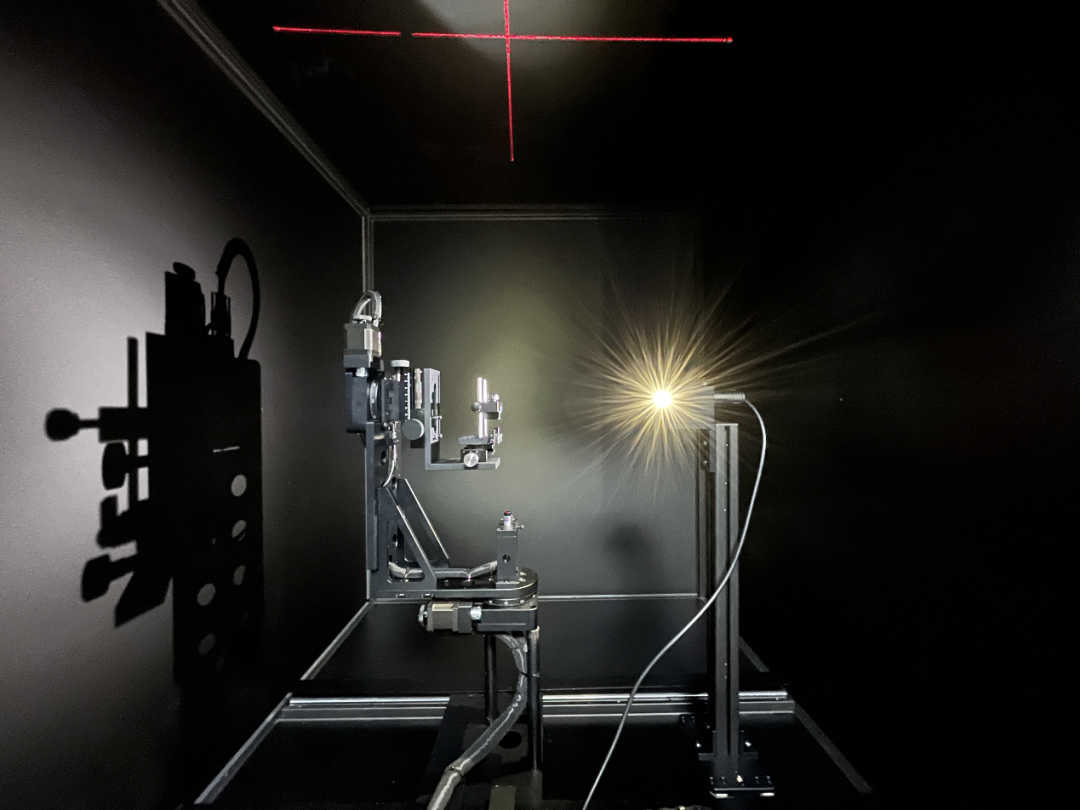CMS (Camera Monitor System) products are designed to improve the driver's field of vision, enhancing clarity and range from the sides and rear of the vehicle. Especially in adverse weather or poor lighting conditions, CMS cameras mitigate the effects of rain, snow, and low light visibility.
As a crucial part of the driver's "eyes," what tests do CMS camera modules undergo before mass production?
During development, camera modules undergo lens selection and performance testing to ensure the best possible fit. Indoor and outdoor image effect tuning is conducted, including but not limited to clarity, distortion, color reproduction, white balance, noise, exposure, gamma correction, contrast, low-light performance, brightness consistency, color consistency, dynamic range, glare, ghosting, optical centering, noise, and more.
Today, we will unveil the secrets of indoor testing for VT-CMS cameras at Voyager Technology's Optics Laboratory. Equipped with professional image quality analysis software Imatest, advanced testing equipment, specialized lighting, test charts, a standard optical laboratory darkroom, and a professional ISP (Image Signal Processing) team. The lab focuses on visual perception testing and compliance verification for smart driving, complying to QC-T-1128-2019 and GB_15084-2022 standards.

ISP teams at Voyager Technology utilize a range of advanced equipment to simulate various driving environments. Combining professional image processing and computer vision techniques, we fine-tune camera performance using ISP tools and software. Through ISP tuning, the camera can provide high-quality image output under various complex scenarios (clear skies, hazy days, rainy days, low-light environments, bright-to-dark transitions, etc.).
Visible Light Multi-color Temperature and Infrared (IR) Dual-band Supplementary Light Source
The Visible Light Multi-color Temperature and Infrared (IR) Dual-band Supplementary Light Source is an advanced illumination system combining visible and infrared technologies for efficient and stable performance. Its core technology lies in providing ample supplementary light in both visible and infrared bands, ensuring clear and accurate image capture and recognition under various environmental conditions. Its design purpose is to achieve uniform and high-intensity illumination, simulating the strong light challenges encountered by vehicles equipped with the CMS system during operation, ensuring reliable and high-quality visual information for CMS systems, enhancing driving safety.

Ultra-high Brightness Transmissive Flicker Light Box
The ultra-high brightness transmissive flicker light box utilizes high-quality LED technology to achieve an ideal fusion of high color rendering index and high brightness. It features up to 9999 levels of brightness adjustment, a wide brightness range of 10lux-150000lux, and a wide color temperature adjustment of 2000K~10000K. Additionally, the current adjustment is flicker-free, and adjustable flicker frequency is supported.
The light box is embedded with two near-infrared bands of 850/940nm, and precisely controls the light source status through a touch screen and programmed control for testing the dynamic range, color reproduction, white balance, brightness consistency, color consistency, and other parameters of the camera's transmission mode. It can simulate dynamic lighting changes in different environments, effectively testing the responsiveness and stability of a CMS-equipped vehicle when rapidly transitioning from bright areas into shaded areas.

Glare Point Light Source
The glare point light source functions to simulate nighttime strong light interference, evaluate anti-glare capabilities, and detect optical performance. It is a high-intensity, high-brightness point light source used to simulate strong light conditions during night driving, such as car headlights and streetlights.
Voyager Technology's optical laboratory uses a fiber optic point light source mode for the glare point light source. By flexibly adjusting the brightness, position, and angle of the light source, it simulates different strong light conditions, observing the imaging effect of the CMS under glare conditions. This allows for the timely discovery of potential issues, which is crucial for optimizing the CMS design and improving its anti-glare performance and image quality, thus helping to ensure the safety of drivers.

Ghosting Point Light Source
The Ghosting Point Light Source is a small LED fixture precisely controlling illumination at 220±22lux and a color temperature of 6000±600K. Combined with a glare testing platform, it automatically and precisely controls the different shooting angles of the object relative to the point light source, simulating ghosting phenomena caused by point light sources in real-world scenarios. This testing enables lens optimization early in the camera design process, significantly improving driving safety.

Electric Glare Test Stand
The Electric Glare Test Stand is a desktop-type precision five-axis test platform suitable for darkroom operation, capable of Raw axis adjustments from -180° to +180° and Roll axis adjustments from -180° to +180° with an accuracy of up to 0.1°. It offers one-touch operation through a touch screen or API connection to a host computer, with advantages such as precise micro-angle adjustment, quick response, precise angle control, and ease of operation.
The platform can be used to fix and adjust the CMS camera's viewing angle and test angle, rigorously evaluate the viewing angle and field of view, to ensure compliance with design requirements. It can be used in conjunction with the glare point light source and ghosting point light source to test for stray light and ghosting phenomena at different positions and angles under high-precision conditions.

Beyond the series of laboratory testing equipment and software "strong support," Voyager Technology's ISP team will also conduct a strict image quality evaluation process to extensively assess the overall image quality of the module. The evaluation methods include subjective and objective assessments, with the results input into a professional software system for automated analysis, batch processing capability and reproducible results, preventing human error and ensuing high-standard image quality of camera modules.
As the market penetration rate of CMS products accelerates, Voyager Technology's ten years of accumulated expertise in optical imaging principles, image and signal processing, and visual perception testing becomes increasingly prominent. We will continue to delve into the application of visual technology in CMS and smart driving. Together, we bring future mobility to life.






